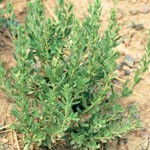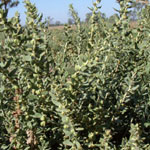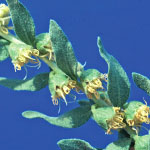Poverty weed
If you think you may have seen poverty weed, please contact us by:
- completing this form
- calling our Customer Service Centre on 136 186, or
- emailing weed.spotters@agriculture.vic.gov.au
Please do not attempt to treat or dispose of this weed yourself. We will treat, remove and dispose of poverty weed safely, at no cost to the land owner.
Why you must report poverty weed
Poverty weed is a strong competitor, and dense infestations can completely exclude other plants. Chemicals found in both the roots and leaves of the plant inhibit the growth of other plants, while large food reserves in its roots allow plants to survive through drought conditions.
It has a strong smell and taste and is unpalatable to stock. Spread mainly occurs when earth-moving or cultivation equipment drags pieces of root from infested to uninfested areas.
Poverty weed originated in North America where it has become a significant weed of rangelands, cereals, overgrazed pastures, and irrigated crops in Canada and the north-western United States.
It has not established on any other continent except Australia. It was first recorded from Newstead in north-central Victoria in 1926 and there are currently infestations in northern Victoria.
Identifying poverty weed
A long-lived perennial herb usually about 20 to 30cm high but can reach 40cm. It reproduces from both roots and seeds. The top-growth dies off in autumn and re-shoots in spring.

Its leaves are aromatic (when crushed), hairy, grey-green, 10 to 30mm long and grow directly from the main stem. Lower leaves are arranged opposite each other — upper leaves are smaller and alternately arranged.

The flower head is greenish yellow (5 to 7mm across) nodding on a short stalk at the base of upper leaves and appears in summer.

